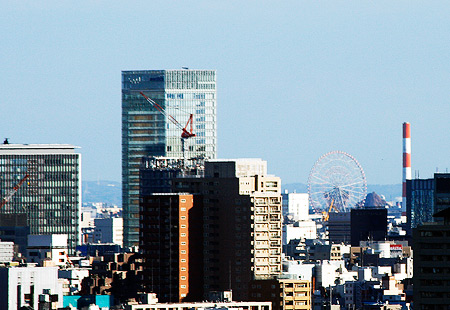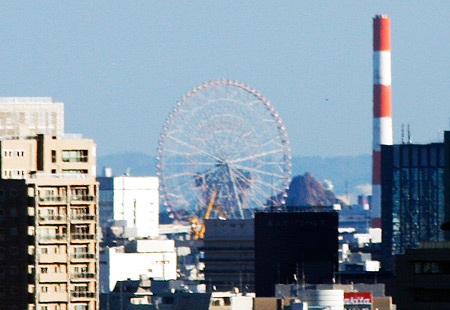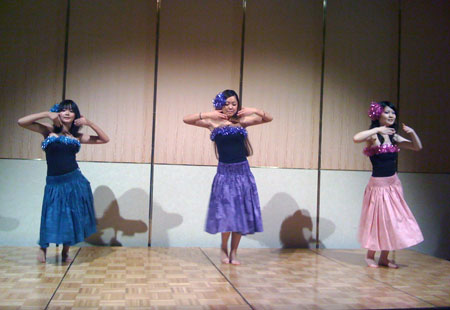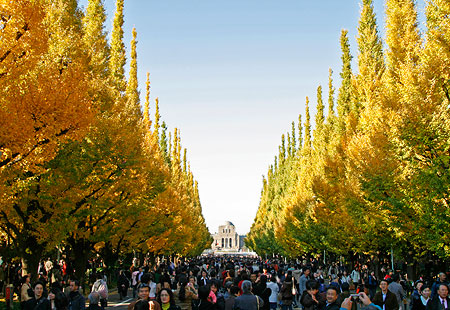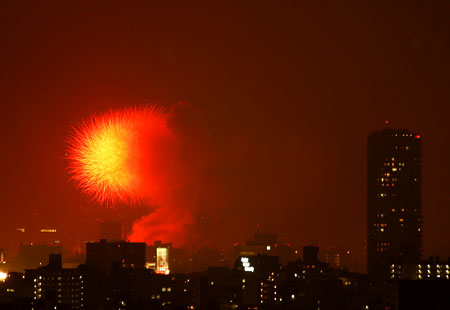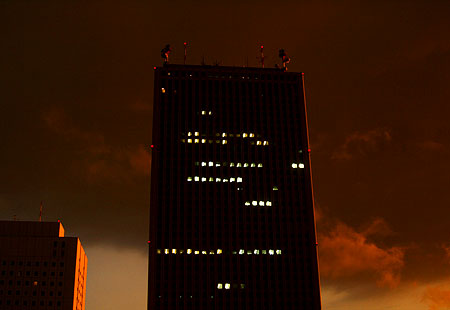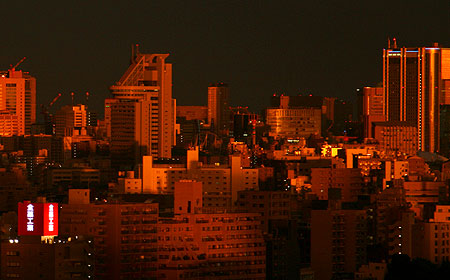So Sachi and I celebrated our first Christmas together. In the past, Sachi had to work past Christmas, which meant that she could not come back to the U.S. with me in time. But since we had our trip to the U.S. already this year, we’re staying in town this time.
The HDTV set and Blu-Ray/HDD set were our big Xmas presents to ourselves, but as you can see from the image below, I had a surprise for Sachi: we’ve been talking about getting the Wii Fit for quite some time, and I figured now was as good a time as any (watch them come out with the Wii HD next week).

We also redesigned the living room, and it works much better now.
Also, for Christmas Eve, we rented the Blu-Ray title Kung Fu Panda. Now, I am already impressed with regular HDTV; it’s pretty good, and very noticeable when you suddenly get regular TV signals. But Blu-Ray, especially with a computer animated feature that has great sharpness? Forget about it. It was impressive as hell. I mean, really impressive. The detail, especially the subtle textures, we astounding.
Old TVs (in the U.S. and Japan, NTSC is what it’s called) have up to 525 lines of resolution, though only 480 are used for the video portion of the broadcast (captions and other data occupy the remaining space). HDTVs have 720 and 1080 lines (depending on the signal), which as much as doubles the number of lines and (due to the widescreen) more than quadruples the information you see displayed.
But the difference is in more than just the resolution. There are types of image presentation called “interlaced” and “progressive.” Interlaced is the old technology, and is worse. With interlaced, every time the TV “scans,” or paints an image from top to bottom, only half the image gets painted–every other line–so it would like seeing a movie projected onto venetian blinds. The following scan fills in the blanks, so you need two scans to see a whole image. Even though old-style TVs scanned 60 times per second, they only showed 30 frames.
Progressive scan, on the other hand, paints the whole image with each scan, so you’re getting twice as much information, which translates to a better picture.
Old TV signals are designated 480i–480 lines of resolution with interlaced scan. Bad quality, but it served for half a century. HDTV broadcast comes in two flavors: 720p and 1080i. You can read what that means–720 lines progressive, and 1080 lines interlaced. 720p and 1080i are roughly the same quality, one doing it with more lines, the other with progressive scan.
Blu-Ray, on the other hand, gives you 1080p, which marries both the higher resolution of 1080 with the greater quality of progressive scan. And you can see it, it really makes a difference.
Most HDTV sets, by the way, can effortlessly switch between these different display settings, which is why we can see all of them. Very flexible.
Anyway, that was last night. We also had wagyu steaks, often referred to as “Kobe Beef,” but essentially was super-fatty-marbled sirloin steaks. Incredibly delicious, but more deadly than pastrami and Häagen Dazs combined.
Tonight, we had a more normal dinner, but enjoyed a very Japanese treat for dessert: Christmas Cake.



This one was special-ordered through the cake shop at the Sunshine Prince Hotel, and is a half-white, half-dark chocolate cake. I’m no big fan of Japanese cakes–they’re usually way too bland and light for my tastes–but this one was very good.
Quick note: in Japan, back in the 80’s, “Christmas Cake” was often used as a pejorative to describe unmarried women over the age of 25–the idea being that no one wants to buy a Christmas cake after the 25th of December. Interestingly, no one ever uses that expression any more. Not because the cake has fallen out of fashion, but because the social stigma on marriageability has changed.





























